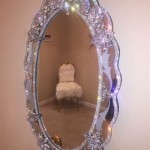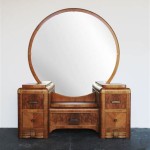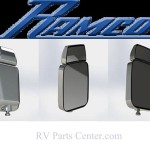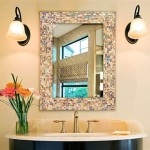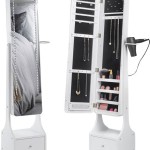Hinged Mirror Door
Hinged mirror doors offer a stylish and functional solution for various spaces, from bedrooms and bathrooms to closets and entryways. They combine the reflective properties of a mirror with the practical swing of a traditional door, maximizing space and enhancing the aesthetics of a room. Understanding their different types, installation processes, and maintenance requirements is crucial for making informed decisions and ensuring long-term satisfaction.
Types of Hinged Mirror Doors
Several factors differentiate hinged mirror doors, including the type of mirror, frame material, and overall design. One common distinction lies in the type of mirror used. Standard mirrors offer a clear reflection, while antique or tinted mirrors provide a decorative touch. Another factor is the frame material. Wood frames offer a classic and versatile look, adaptable to various interior design styles. Metal frames, such as aluminum or steel, provide a more contemporary and sleek aesthetic. Frameless mirror doors, as the name suggests, lack a surrounding frame, creating a minimalist and seamless appearance. The choice often depends on the desired aesthetic and the existing décor of the room.
Beyond the mirror and frame, the overall design of the door contributes to its functionality and style. Full-length mirror doors maximize the reflective surface, offering a complete view and creating the illusion of a larger space. Partial mirror doors combine a mirror with other materials, such as wood or frosted glass, offering a balance of privacy and reflection. The size and configuration of the mirror panels also play a role. Some doors feature a single, large mirror, while others incorporate multiple panels, creating a more dynamic look. Understanding these variations allows homeowners to select the best option for their specific needs and preferences.
Installation of Hinged Mirror Doors
Proper installation is critical for the functionality and longevity of hinged mirror doors. Before beginning the installation process, accurate measurements of the doorway are essential. This ensures a precise fit and prevents issues with opening and closing. The next step is to prepare the doorway by ensuring it is level and plumb. Any imperfections in the doorway can affect the alignment and operation of the door. Once the doorway is prepared, the hinges can be installed on the door jamb and the mirror door. The type of hinges used will depend on the weight and size of the door. Heavy-duty hinges are recommended for larger and heavier doors to provide adequate support.
After the hinges are installed, the door can be hung on the jamb. It's important to check the alignment and swing of the door to ensure it operates smoothly and without obstruction. Shims can be used to adjust the door's position if necessary. Once the door is properly aligned, the hardware, such as handles or knobs, can be installed. Finally, it's important to seal any gaps around the door frame to prevent drafts and improve energy efficiency. Weather stripping can be applied around the perimeter of the door to create a tight seal. Careful attention to detail during installation will result in a secure and properly functioning door.
Maintenance and Care
Maintaining hinged mirror doors is relatively straightforward, requiring minimal effort to keep them looking their best. Regular cleaning is essential for maintaining the clarity and shine of the mirror. Using a glass cleaner and a soft cloth is the recommended method for cleaning mirror surfaces. Avoid using abrasive cleaners, as they can scratch the mirror. For framed doors, the frame material also requires attention. Wood frames can be cleaned with a damp cloth and wood cleaner, while metal frames can be cleaned with a mild detergent and water. Regularly dusting the frame will help prevent the buildup of dirt and grime.
Beyond cleaning, inspecting the hardware is crucial for ensuring the continued smooth operation of the door. Check the hinges periodically for any signs of wear or looseness. Tightening loose screws or replacing worn hinges can prevent more significant problems down the line. Similarly, inspecting the handles and knobs for any damage or malfunction is important. Replacing damaged hardware will maintain the functionality and aesthetic appeal of the door. By following these simple maintenance steps, homeowners can prolong the lifespan of their hinged mirror doors and ensure they remain a functional and stylish element of their homes.
Furthermore, addressing minor issues promptly can prevent them from escalating into larger, more costly repairs. For example, if the door begins to stick or rub against the frame, it's important to identify and address the cause. This may involve adjusting the hinges, planing the door edge, or addressing any underlying issues with the door frame. By being proactive in addressing minor problems, homeowners can avoid more extensive repairs and ensure the long-term functionality of their hinged mirror doors.

Secret Mirror Door Buy Now Secure The

Hinged Wardrobe Door Mirror Flexi Storage

Secret Mirror Door Buy Now Secure The

Create The Perfect Look With Hinged Wardrobe Doors

Stripe Mirror Wardrobe With Drawers In Graphite Grey Hinged Door 155cm

Hinged Wardrobes With Mirror Doors Diotti Com

Miramar Hinged Mirror Door Robes 2 4 6 Type 5 Eyres Furniture

Hinged Wardrobes With Mirror Doors Diotti Com

Wardrobe With Hinged Mirror Doors 150cm Oslo1 Colour Oak Black Led Light No Diy At B Q

Sliding Wardrobe Vs Hinged Which Is Perfect For Your Home Plan N Design Mirrored Doors Modern Closet Designs Mirror

